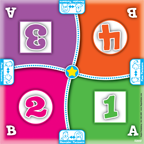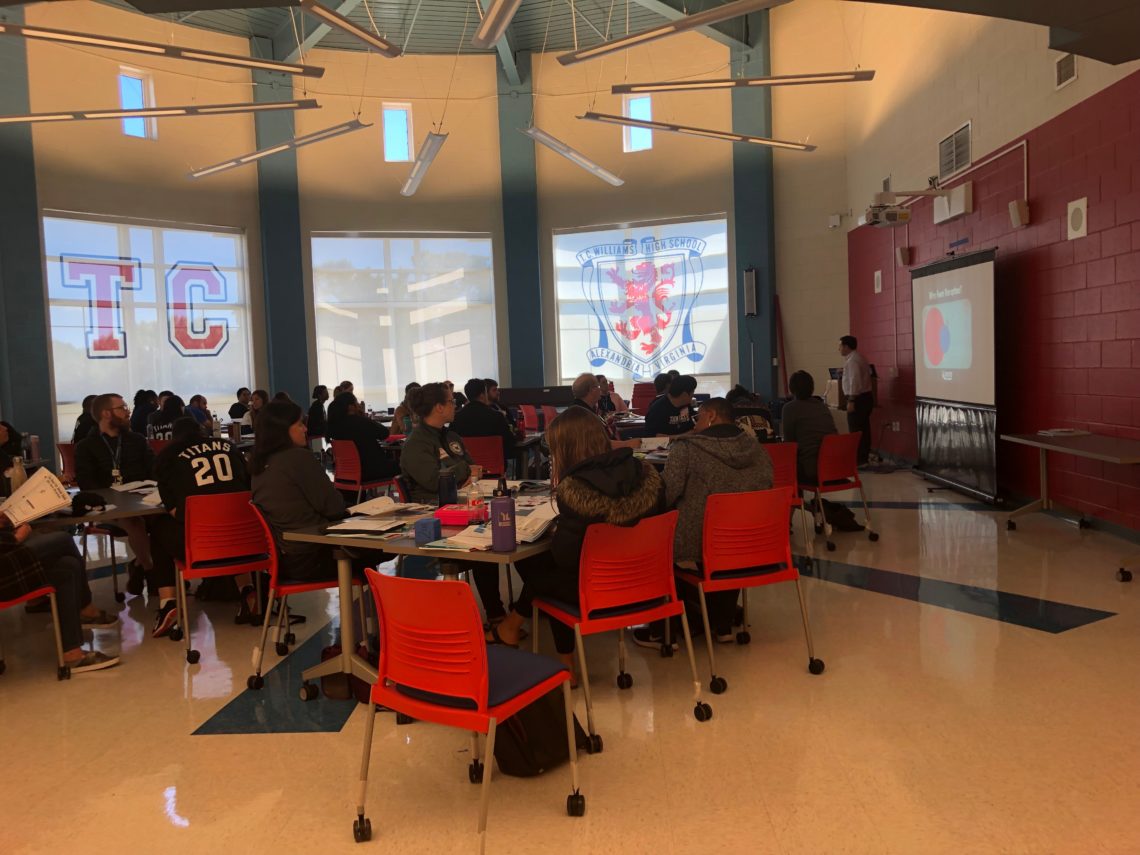Cooperative Learning Style Introduced in Classes
Celeste Amron and Sadie Finn

While students were enjoying the last week of summer, teachers were in the building, learning how to help keep the classroom interactive. All teachers underwent a three day Kagan training program, where they learned the ins and outs of a new system that gets students up, engaged, and learning.
“Kagan teaches strategies to teachers to encourage engagement among all students in class,” said Science teacher Tiffany Barner. “It incorporates structures that help teachers… build the classroom community so that students feel comfortable with sharing and participating in class.”
“It is based on four key principles,” said History teacher Molly Freitag, “[which are] positive interaction, individual accountability, equal participation, and simultaneous interaction.” These principles can be seen in many of the Kagan tools that were taught to teachers.
“RallyCoach” is one of these tools favored by Freitag. Students are put in pairs, and they ask and answer questions together. “Because they are in a partner structure, they get coaching and feedback right away, instead of waiting for me to grade the papers,” said Freitag. These structures help students interact with one another and teach each other, rather than sit through an entire class taking silent notes.
Another benefit of the Kagan model is that teachers are able to see what students do or do not understand. Teachers walk around while students are participating in activities, so they can see misunderstandings that students may have and later clarify to the whole class, instead of letting questions go unanswered.
Each department has a Kagan Coach, who helps other teachers integrate Kagan into their classrooms. Freitag and Barner are the Kagan Coaches for their departments.
“The coaches are all T.C. teachers, so we are able to go into classes on both campuses to coach the teachers as they try different structures, and we can also help them plan how they want to use Kagan structures in upcoming lessons,” said Freitag. “[We] also model Kagan structures in [our] own classes so teachers can come in and observe, and we incorporate structures in department meetings to allow the teachers time to practice.”
Some teachers are already testing out the new structure. “They are taking class activities that they have always done, but tweaking it with a Kagan structure – and from what they are reporting, it works better with Kagan,” said Freitag.
English Co-Chair Lindsay Cooke-Yarborough is one of these teachers. She believes in the power of group work. “If you have people working together, it takes the pressure off because it makes it a group effort,” she said. Additionally, Cooke-Yarborough said that working in groups can allow ideas to grow to be “more complex and more in depth, raising the vigor of the ideas that can be created.”
“[Kagan] was really similar to what I was already doing,” Cooke-Yarborough said, “but these structures make it more concerte and give me actual procedures.”
Kagan structures depend on students engaging in their learning, which can be difficult to ensure. In order to get all students involved, Cooke-Yarborough said, “it is really important to start from day one, and then it becomes habitual. If students have always done this, it is easier to keep it going all year.”
Additionally, the team aspect of Kagan is designed to encourage reluctant learners to participate in the activities. “Students build relationships in the class and in teams,” said Freitag. “Almost everything is done with a partner or in a small group, it helps students become more comfortable with each other.” This team-centered thinking forces everyone to participate in order to complete a task, involving those who might not participate normally.
“I enjoy using Kagan structures because no student can hide. This also ensures that all students are learning,” said Barner.



